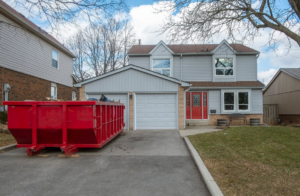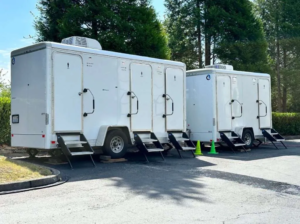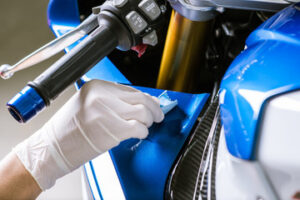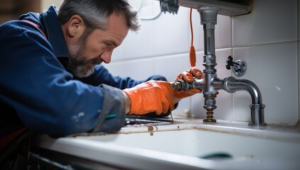Whether you’re a homeowner working on a home renovation or a contractor on a construction site, dumpster rental can simplify waste disposal and make your project go more smoothly. But with so many dumpster rental companies out there, how do you choose the right one for your needs?
The key is understanding what you can and cannot put in a dumpster. In this article, we’ll cover everything from choosing the right container size to scheduling delivery and pickup. Contact Northwest Refuse Service now!

When renting a dumpster, it is important to choose the right size. This helps ensure that all of your waste is contained and that you do not exceed the weight limit. Choosing the wrong size can result in costly overage fees. Luckily, it is very easy to find out what size dumpster you need for your project by using a simple calculation.
First, determine the approximate amount of waste you will generate during your project. To do this:
- Start by going room by room and taking a mental inventory of what you need to dispose of.
- Include any bulky items that you plan to throw away, as these can add up quickly.
- Use this number to estimate how many cubic yards of waste you will have.
- Divide that number by the bin’s volume in cubic yards to get an idea of how much space you will need.
There are four main dumpster sizes available for rent: 10-yard, 20-yard, 30-yard, and 40-yard. Each of these sizes corresponds to approximately how many pickup truck loads the bin will hold. However, these are general guidelines and may vary from company to company.
Generally, a 10 yard dumpster will be sufficient for small home projects, such as kitchen or bathroom remodels. This bin can also be used to get rid of a lot of debris after a small storm or when clearing out a house before a move. Likewise, this dumpster is great for small businesses that need to get rid of a lot of waste in a short period of time.
A 20-yard dumpster is usually the most popular choice for homeowners and contractors working on medium-sized projects. This dumpster can accommodate a large number of different materials and is perfect for getting rid of a lot of bulky waste, such as broken-down furniture or old appliances.
A 30 yard dumpster is the best option for larger-scale projects. This dumpster can take up to 9 pickup truck loads and is perfect for a variety of different materials, including concrete, dirt, and rock. It is also ideal for complete home renovations, replacing windows and doors, or large landscaping projects such as cutting down trees.
When renting a dumpster, the location is important. It needs to be on flat ground so that the dumpster can be delivered and picked up, as well as away from areas where people or animals may walk. In addition, the dumpster should be located where it will not block access to a driveway, loading zone, fire hydrant, or bus stop. There are also some places that do not allow dumpsters, so it is important to check with the city before deciding on where to place one.
Many homeowners rent a dumpster for projects like home renovations or major cleanouts. If you have a large amount of waste to get rid of, it can be difficult to decide where to put the dumpster. A reputable dumpster rental company will help you determine the best spot for the dumpster, and they will give you tips on how to place it so that it is safe and convenient.
Most cities have strict rules about where a dumpster can be placed, and it is essential to know these rules before starting your project. In some cases, you may need a permit to have a dumpster on the street, and if you do not have a permit, you could be fined by the city. If you are planning to place your dumpster in the street, be sure to contact your local city government and homeowner’s association before renting.
Ideally, the dumpster should be placed on private property, but that may not always be possible. In these cases, the dumpster can be placed on a driveway. However, it is important to remember that a dumpster will be extremely heavy when full, so it should not be placed on a steep slope or in a driveway that is too small for the vehicle to maneuver. Additionally, a dumpster should not be placed where it will obstruct the path of people using the driveway or cause damage to the lawn.
The cost to rent a dumpster varies based on size, location, and current supply and demand. It is important to compare prices from multiple companies before making a decision. You should also be aware of hidden fees, such as disposal or dump charges, hazardous waste fees, and delivery fees. These fees will increase the total price of your rental. By doing your research and comparing prices, you can find the best dumpster at the lowest price.
Many customers need dumpster rental services when undertaking major construction or cleanup projects, such as a demolition project that leaves a lot of debris behind; renovating a home with drywall, paint, flooring and other materials; or organizing a neighborhood clean-up effort. Other times, homeowners rent dumpsters to get rid of a lot of unwanted junk that has been piling up, or when they have an impending move that requires the disposal of lots of boxes.
Dumpsters are more convenient than hauling debris to a local landfill or waste disposal facility, but they can also be costly if customers don’t carefully consider the pricing factors. The cost of a dumpster is made up of three elements: dump fees, haul rates and overage charges. Dump fees are charged to the dumpster company by the landfill, waste management center or recycling center for processing the customer’s debris. These fees vary by location and are usually measured in short tons. The haul rate is the profit margin that the dumpster rental company adds to the dump fee. Overage fees are incurred when the dumpster is filled above its maximum weight limit.
Customers should also factor in delivery and pickup fees when comparing dumpster rental prices. The initial quote may not include these costs, so it is important to ask about them before making a final decision. The delivery fee covers the transportation and fuel costs of delivering and picking up the dumpster. A pickup fee is charged when the dumpster cannot be removed because it is blocked by a parked car, for example.
Some dumpster rental companies offer flat-rate pricing, while others charge a per-week or per-ton price that is added to the basic container cost. Both options have their advantages and disadvantages, but the flat-rate option is often more predictable for the customer than a variable-rate price. If you are considering either option, compare the pricing of several dumpster rental companies before making a final decision. Using an online quote tool can help you compare quotes quickly and accurately. Then, you can be sure to choose the right dumpster for your needs at the best possible price.
If you’re a homeowner undertaking a major cleanup project or a contractor on a construction site, renting a dumpster can make the process of waste disposal much easier. Dumpsters come in a variety of sizes to accommodate different amounts of waste. Once you’ve selected the right dumpster size, you can schedule garbage pickup at your convenience.
A front-load dumpster can be used to dispose of everyday trash like food scraps, paper towels, packaging, and old clothes, also known as municipal solid waste (MSW). It can also be used to discard construction and demolition debris, or C&D. However, if you’re disposing of hazardous materials, medical waste, or electronics, you’ll need to use a separate service.
The rental process for a front-load dumpster begins when you place your order online or over the phone. After you provide your contact information and the amount of waste you plan to discard, a local provider will deliver a trash container to your driveway on a scheduled date and time. You can fill the dumpster with household junk, construction debris, yard waste and more. The only rule is that the trash must be contained within the bin – if it spills out, you’ll be charged for additional pickups.
When the dumpster is full, you can call your provider to have it removed. The hauler will arrive at your home with a hook lift system that’s attached to their light-duty truck. They’ll place the dumpster on your driveway and you can throw away your trash by throwing it over the side panel or by walking it into the walk-in double doors if the bin has them. You can usually expect a five- to 10-day rental period. If you need more time, you can extend your dumpster rental agreement for an additional cost.
Junk removal services are a great option for homeowners who are undergoing a major decluttering effort or a home construction or remodeling project. However, they are not as effective for bigger projects such as estate cleanouts or hoarding deep cleanings. While a dumpster rental can be used for these types of large projects, it’s important to research municipal options to ensure your waste is disposed of properly.






